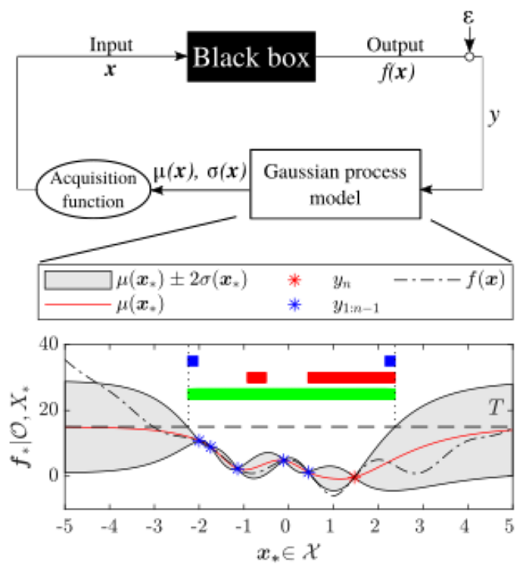URL: https://msk.desy.de/e88987/e333178/e333868/index_ger.html
Breadcrumb Navigation
Bayesian optimization for the optical synchronization system
Traditional methods for fine-tuning controllers in the field of control theory typically revolve around optimizing a model. When employing such optimization techniques on an actual system, their success largely hinges on how accurately the model reflects the plant's dynamics, emphasizing the need for precise identification of these dynamics. Consequently, data-driven approaches to control and optimization have garnered increasing attention in recent years. This growing interest has been amplified by significant advancements in the field of machine learning, resulting in the proposal of various algorithms for data-driven controller tuning, among which Bayesian optimization stands out.
Bayesian Optimization has proven to be highly effective in tuning Black Box systems, where little to no prior information about the underlying system is available. It accomplishes this by adjusting tunable parameters in a manner that minimizes an arbitrary (non-)convex cost function. A key advantage of Bayesian optimization lies in its capacity to handle noisy evaluations of the cost function by utilizing a probabilistic surrogate model.
In practical applications, most system optimizations necessitate the imposition of constraints, such as limitations on control inputs to prevent saturation effects on the actuators. One notable example of such a safety-critical system is the laser-based synchronization (LbSync) system at the European XFEL. In this context, it is imperative to ensure that the timing gap for each subsystem remains below a specified threshold T; otherwise, an alarm system intervenes, causing the subsystems to "unlock". However, locking all subsystems is time-consuming and should be avoided during the optimization process. Methods proposed in [1] and extended in [2] offer a solution by allowing the declaration of safe constraints. These techniques provide a means to guarantee safety up to an failure probability.
The next objective is to enhance the efficiency of the procedure by reducing the number of samples required, thereby decreasing the tuning time on the machine. To achieve this, various sources, such as simulations, should be leveraged to expedite the identification of optimal settings.
Purpose/goal/objectives:
- Enhancing system performance
- Automating the tuning process
- Enhancing the algorithm's efficiency to reduce both the time and the number of samples required for optimization.
- Making Bayesian optimization more accessible and user-friendly

References:
- Sui, Y., Gotovos, A., Burdick, J., and Krause, A Safe exploration for optimization with Gaussian pro-cesses. In 2015 32nd International Conference on Machine Learning (ICML), Proceedings of Machine Learning Research
- Lübsen, J., Schütte, M., Schulz, S., Eichler, A. A Safe Bayesian Optimization Approach for Tuning the Optical Synchronization System at European XFEL. In 2023 22nd World Congress of the International Federation of Automatic Control (IFAC)


